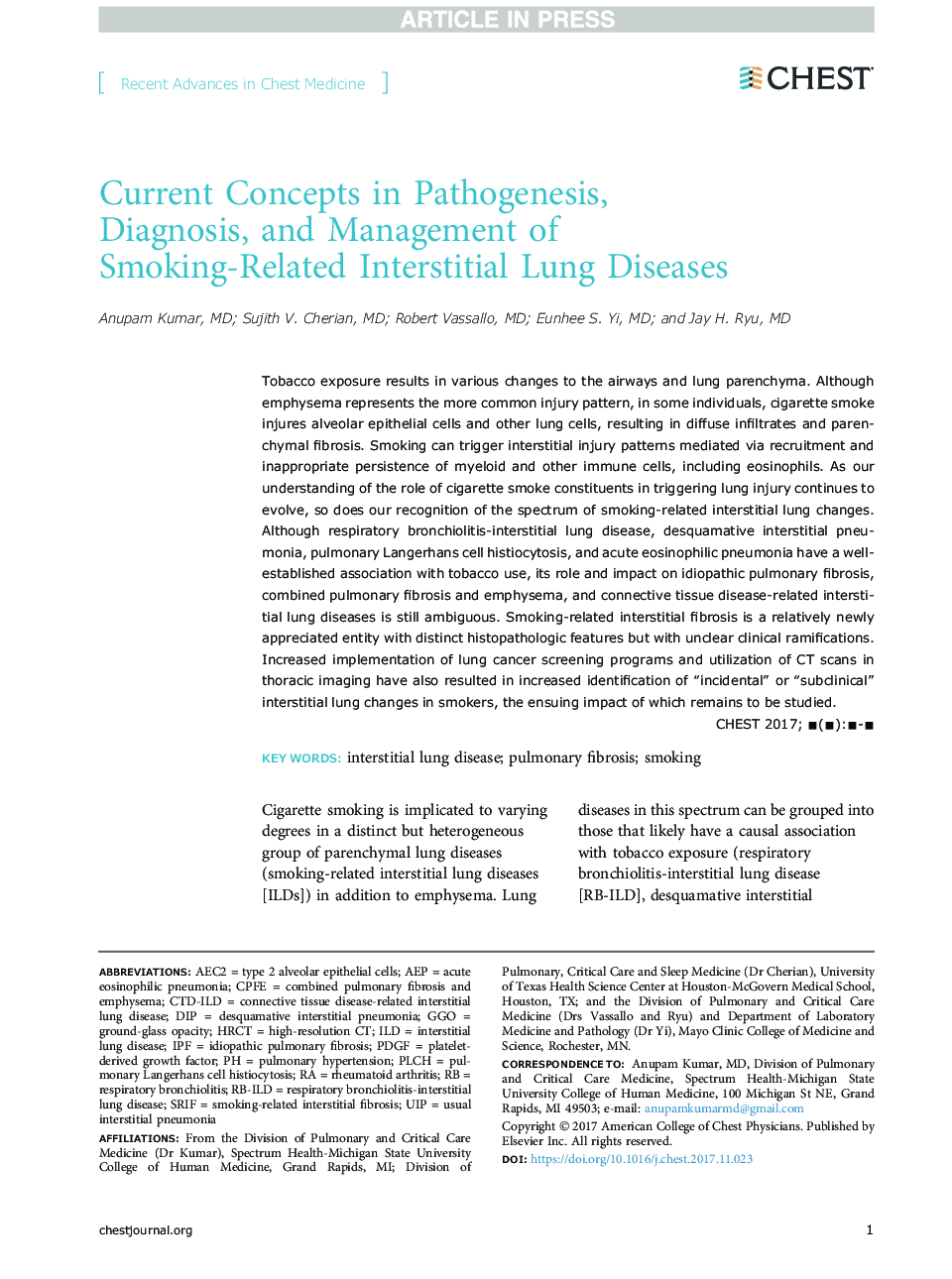| Article ID | Journal | Published Year | Pages | File Type |
|---|---|---|---|---|
| 8657729 | Chest | 2018 | 15 Pages |
Abstract
Tobacco exposure results in various changes to the airways and lung parenchyma. Although emphysema represents the more common injury pattern, in some individuals, cigarette smoke injures alveolar epithelial cells and other lung cells, resulting in diffuse infiltrates and parenchymal fibrosis. Smoking can trigger interstitial injury patterns mediated via recruitment and inappropriate persistence of myeloid and other immune cells, including eosinophils. As our understanding of the role of cigarette smoke constituents in triggering lung injury continues to evolve, so does our recognition of the spectrum of smoking-related interstitial lung changes. Although respiratory bronchiolitis-interstitial lung disease, desquamative interstitial pneumonia, pulmonary Langerhans cell histiocytosis, and acute eosinophilic pneumonia have a well-established association with tobacco use, its role and impact on idiopathic pulmonary fibrosis, combined pulmonary fibrosis and emphysema, and connective tissue disease-related interstitial lung diseases is still ambiguous. Smoking-related interstitial fibrosis is a relatively newly appreciated entity with distinct histopathologic features but with unclear clinical ramifications. Increased implementation of lung cancer screening programs and utilization of CT scans in thoracic imaging have also resulted in increased identification of “incidental” or “subclinical” interstitial lung changes in smokers, the ensuing impact of which remains to be studied.
Keywords
CTD-ILDUIPSmoking-related interstitial fibrosisHRCTSRIFrespiratory bronchiolitis-interstitial lung diseaseRB-ILDPDGFDIPPLCHIPFAEPCPFEhigh-resolution CTGGOILDRheumatoid arthritisrespiratory bronchiolitisInterstitial lung diseaseSmokingplatelet-derived growth factorPulmonary fibrosisidiopathic pulmonary fibrosisCombined pulmonary fibrosis and emphysemaPulmonary langerhans cell histiocytosisPulmonary hypertensionAcute eosinophilic pneumoniaUsual interstitial pneumoniaDesquamative interstitial pneumoniaground-glass opacity
Related Topics
Health Sciences
Medicine and Dentistry
Cardiology and Cardiovascular Medicine
Authors
Anupam MD, Sujith V. MD, Robert MD, Eunhee S. MD, Jay H. MD,
